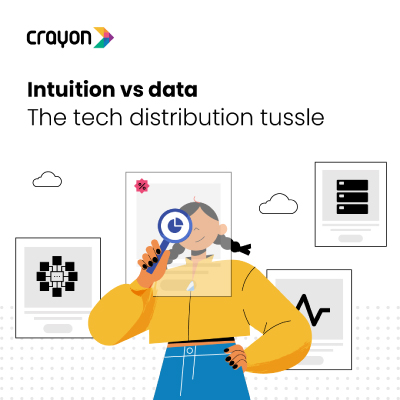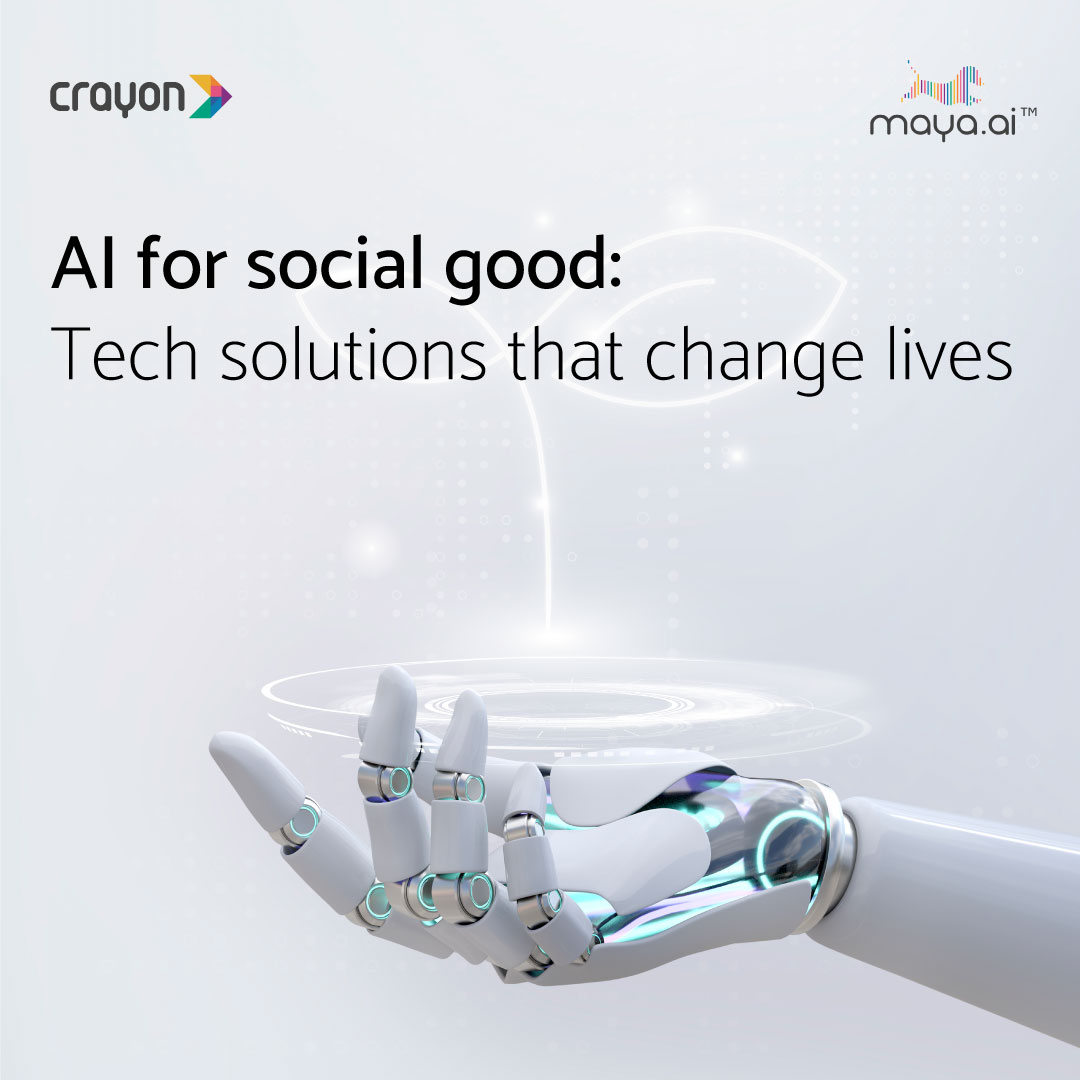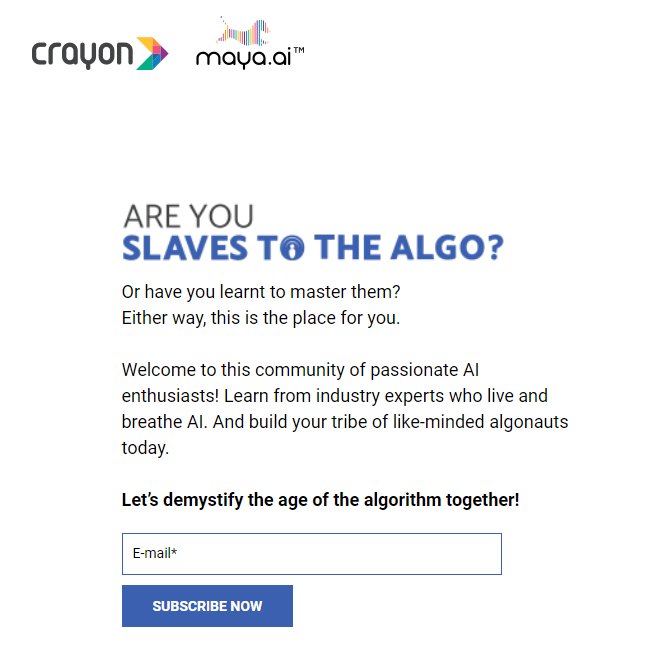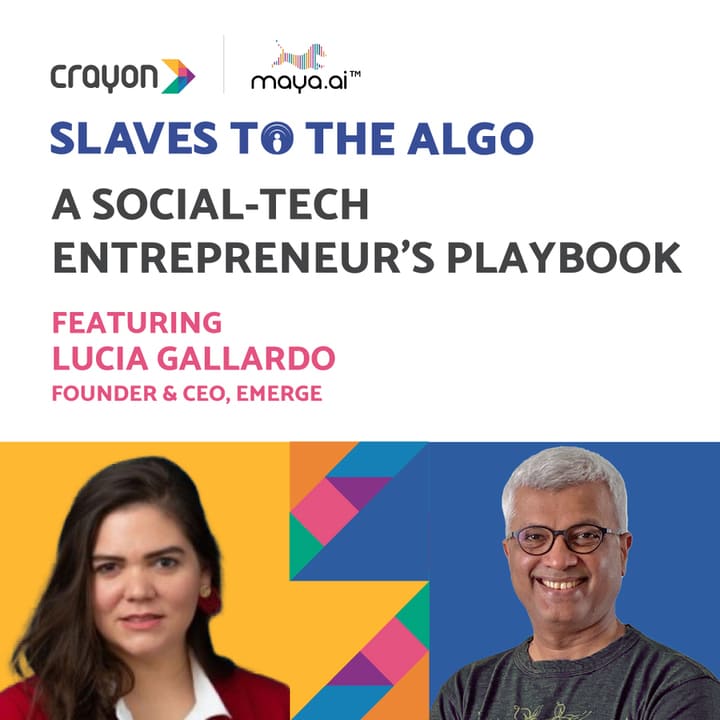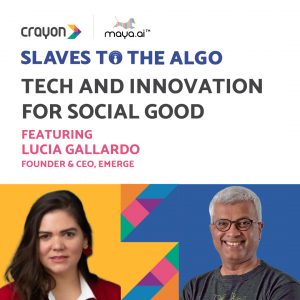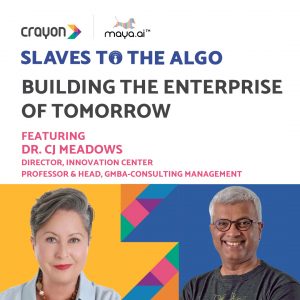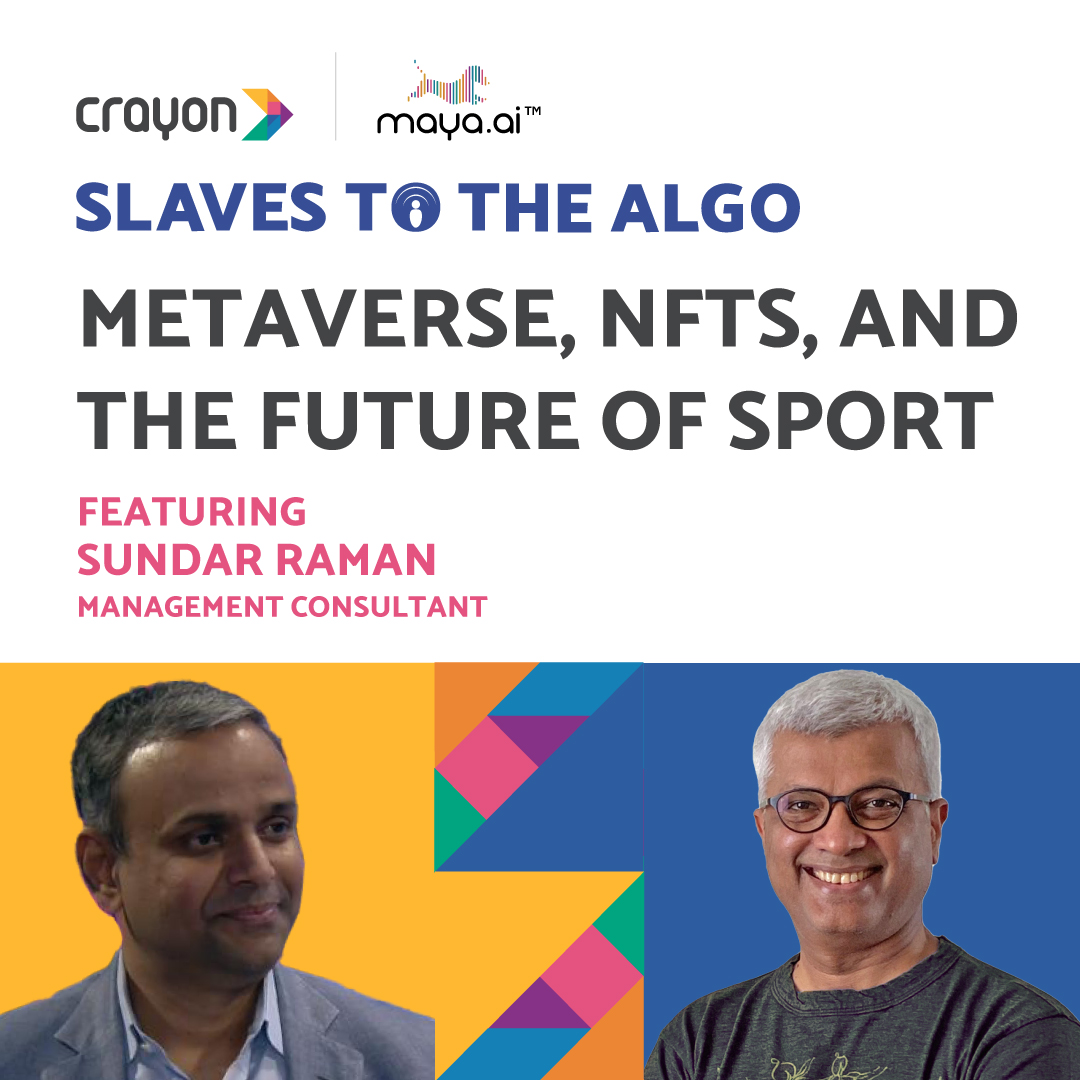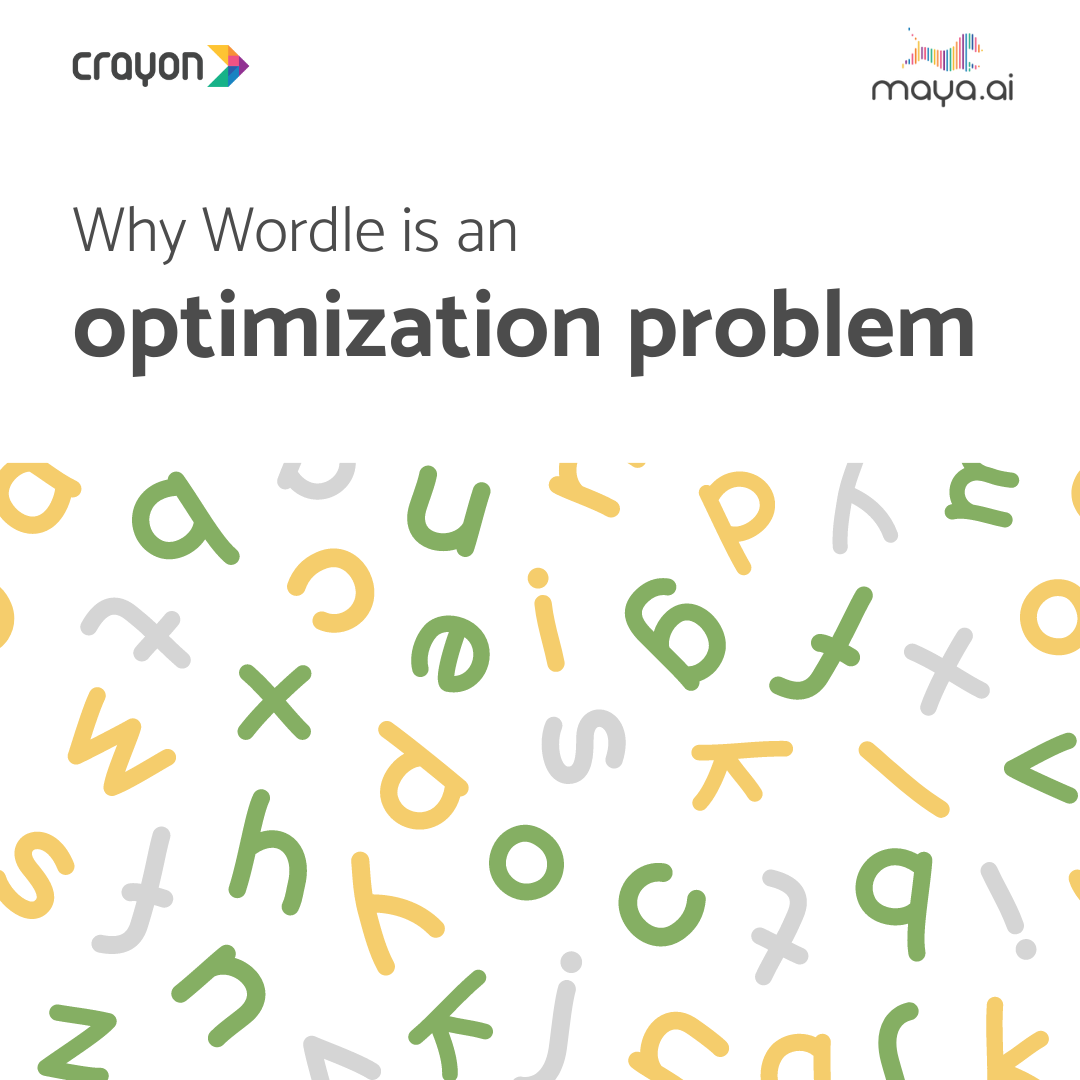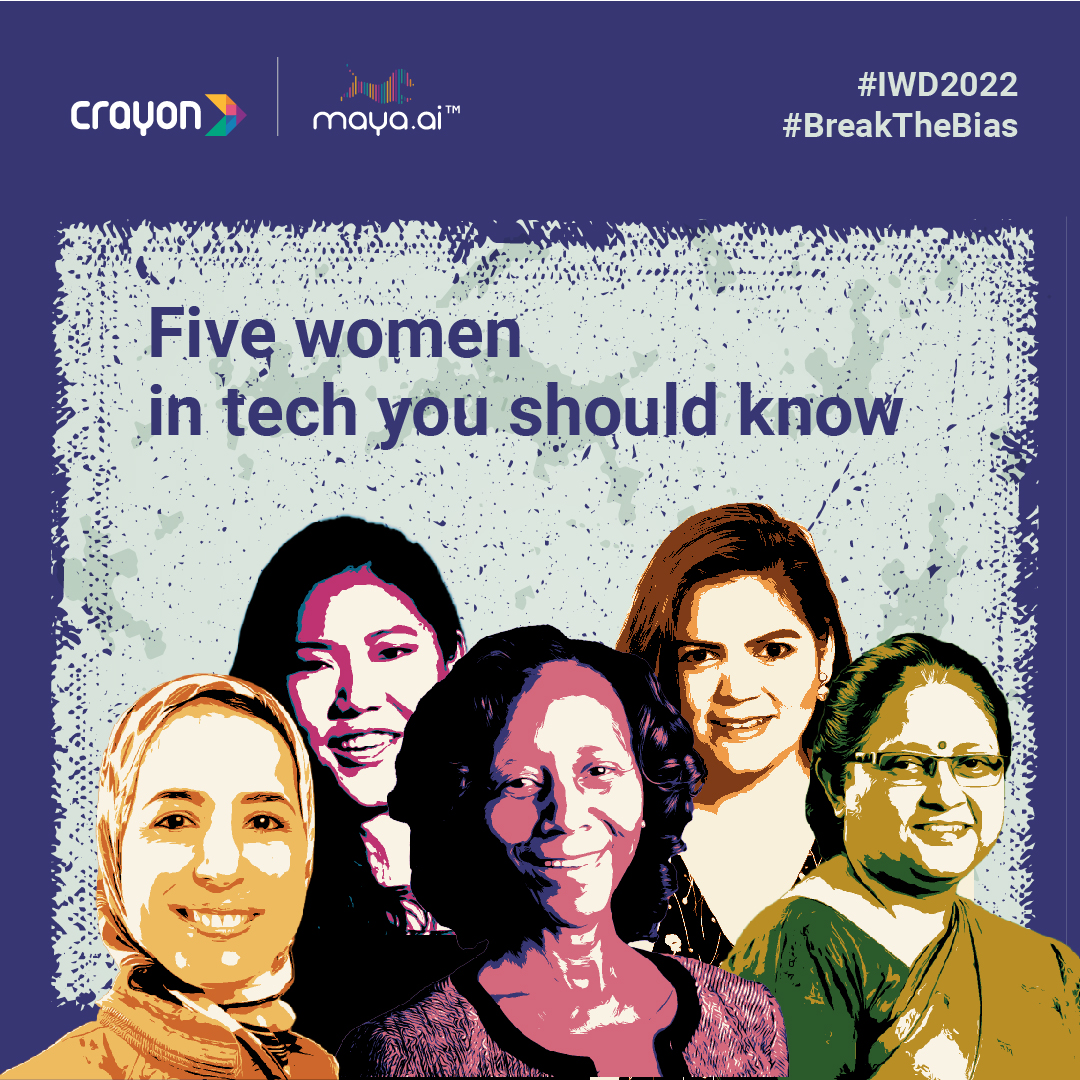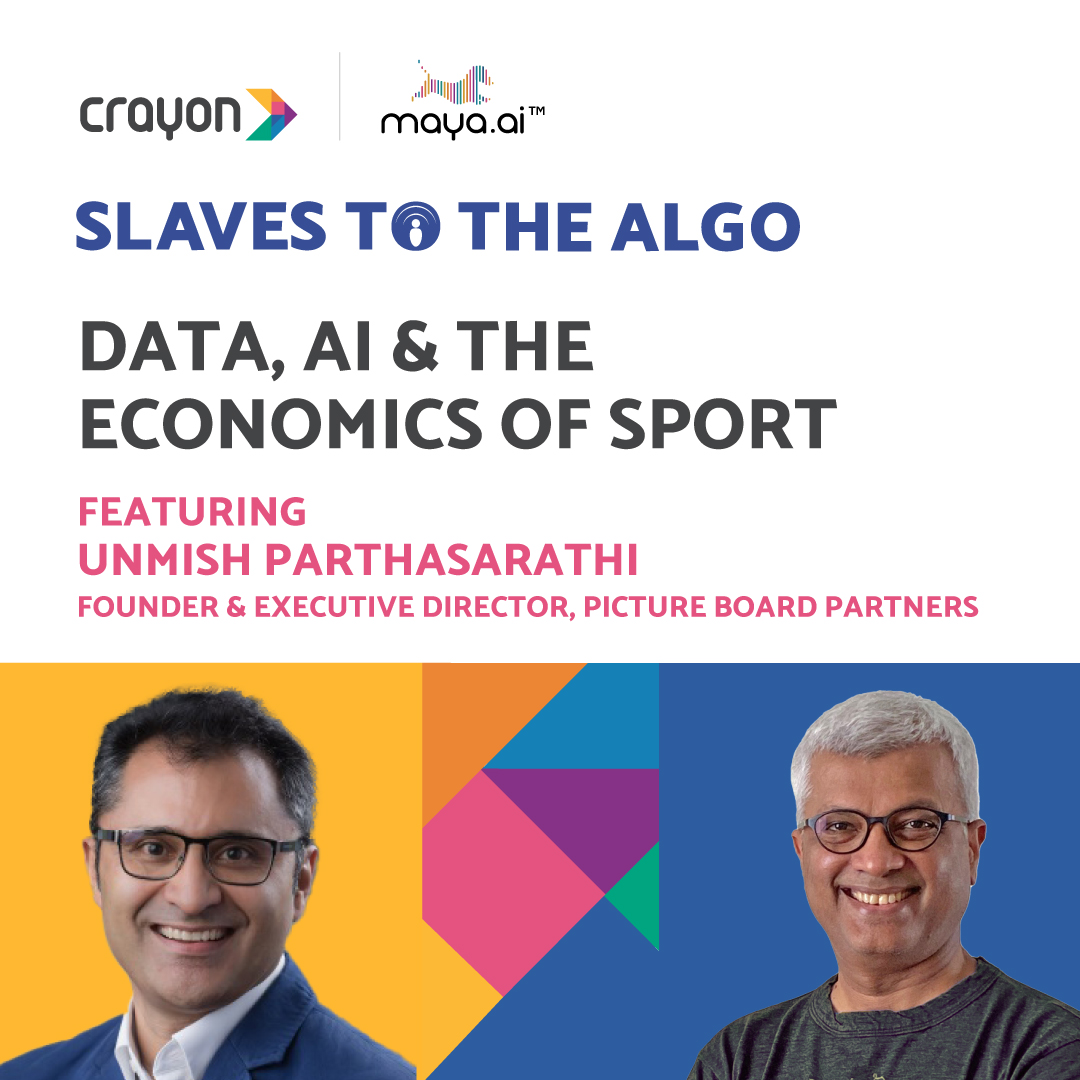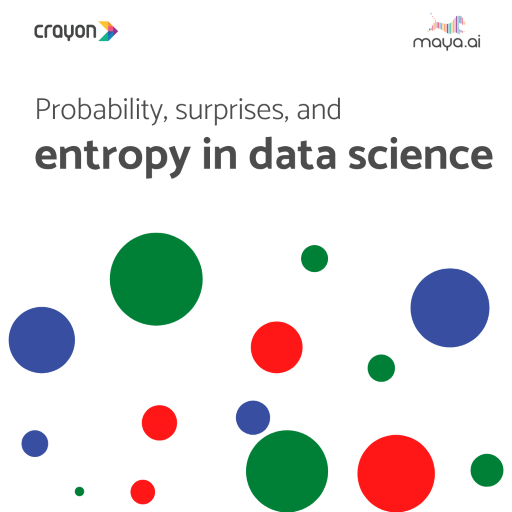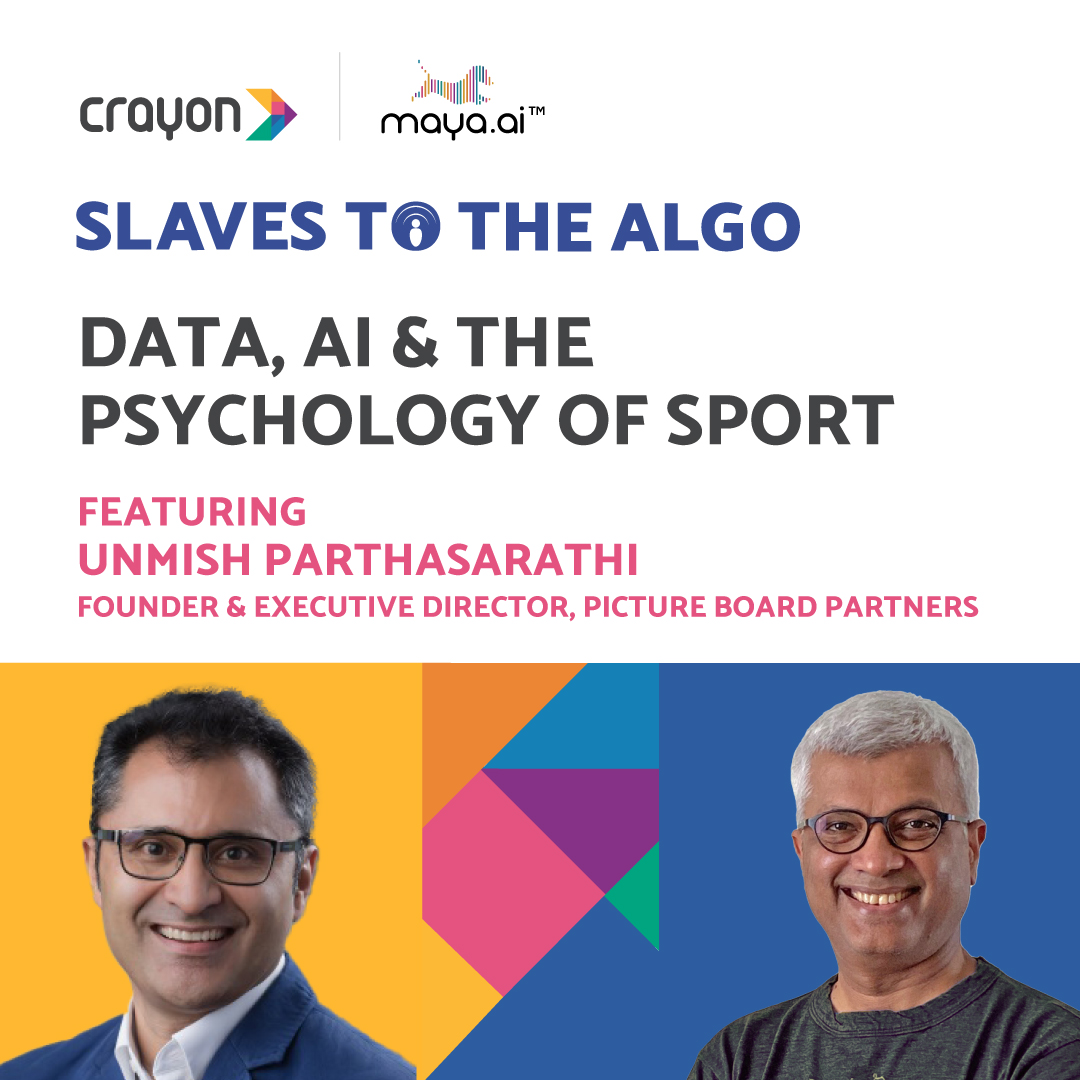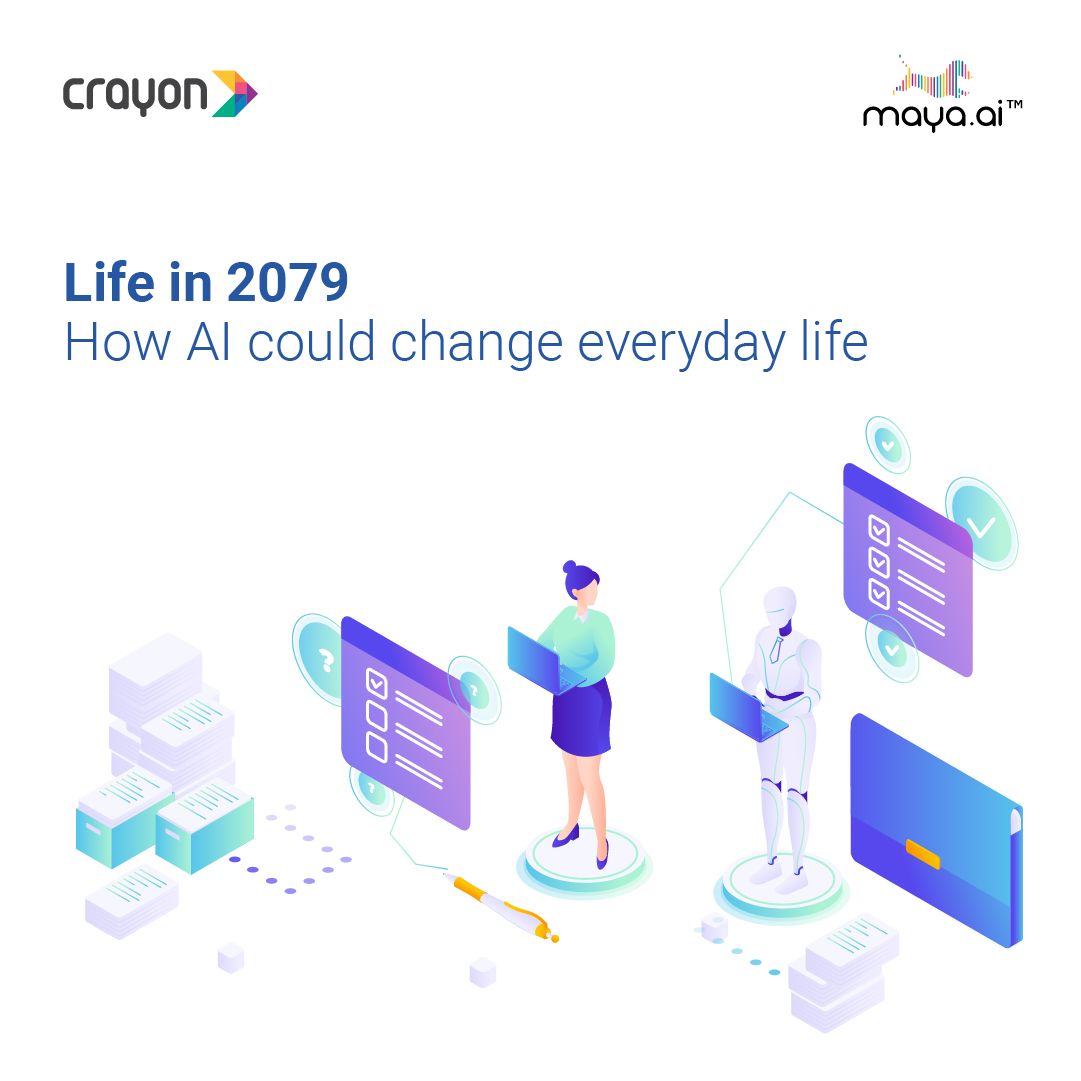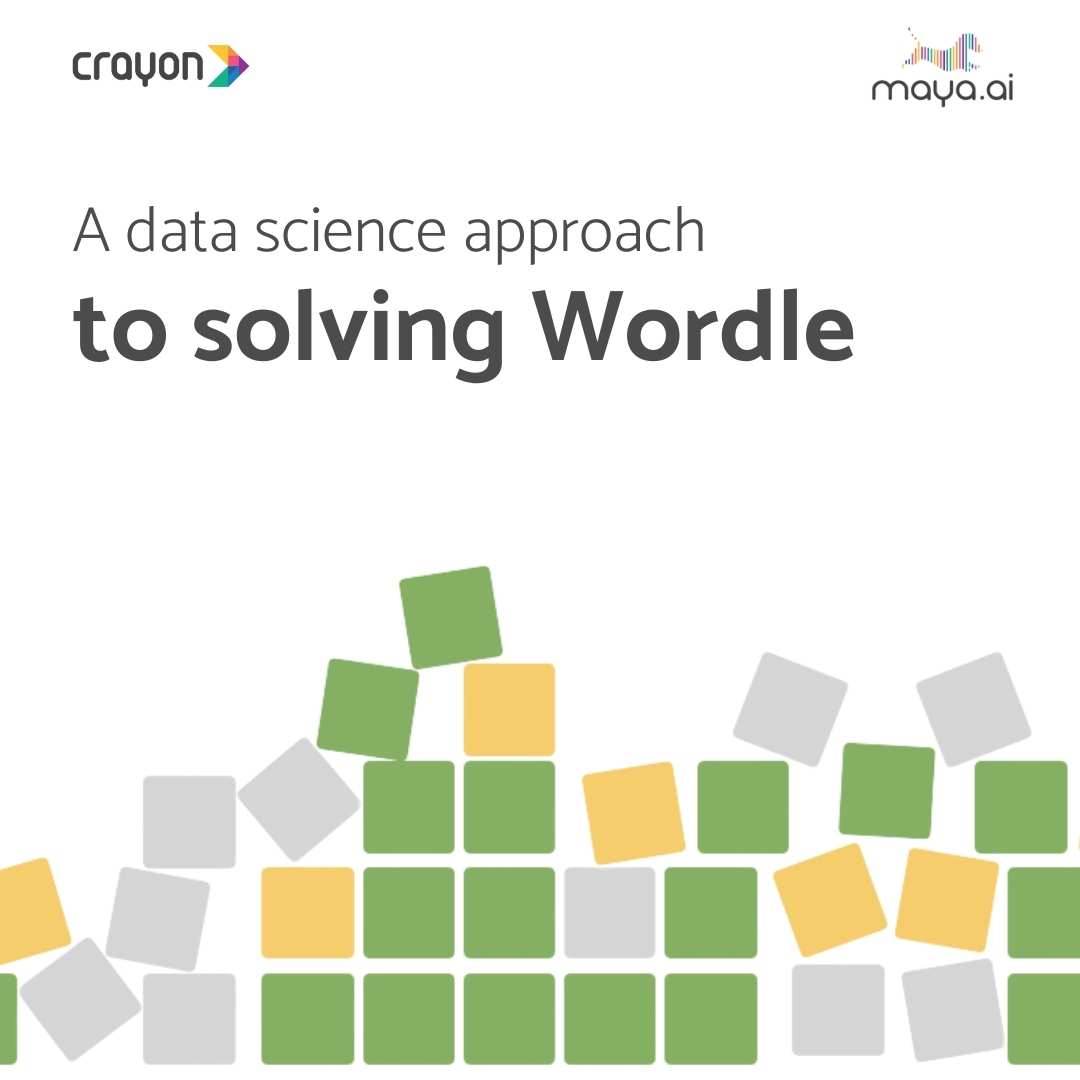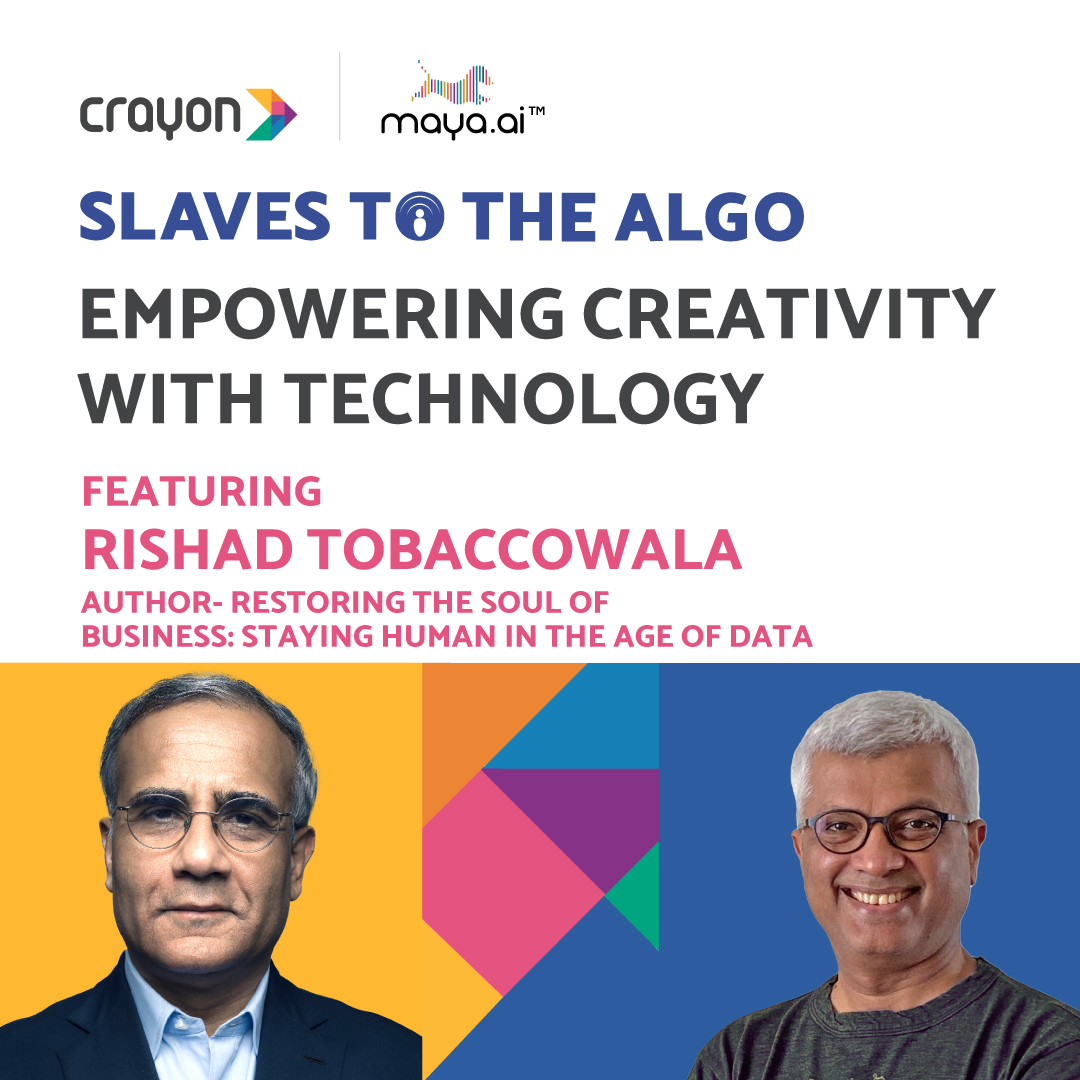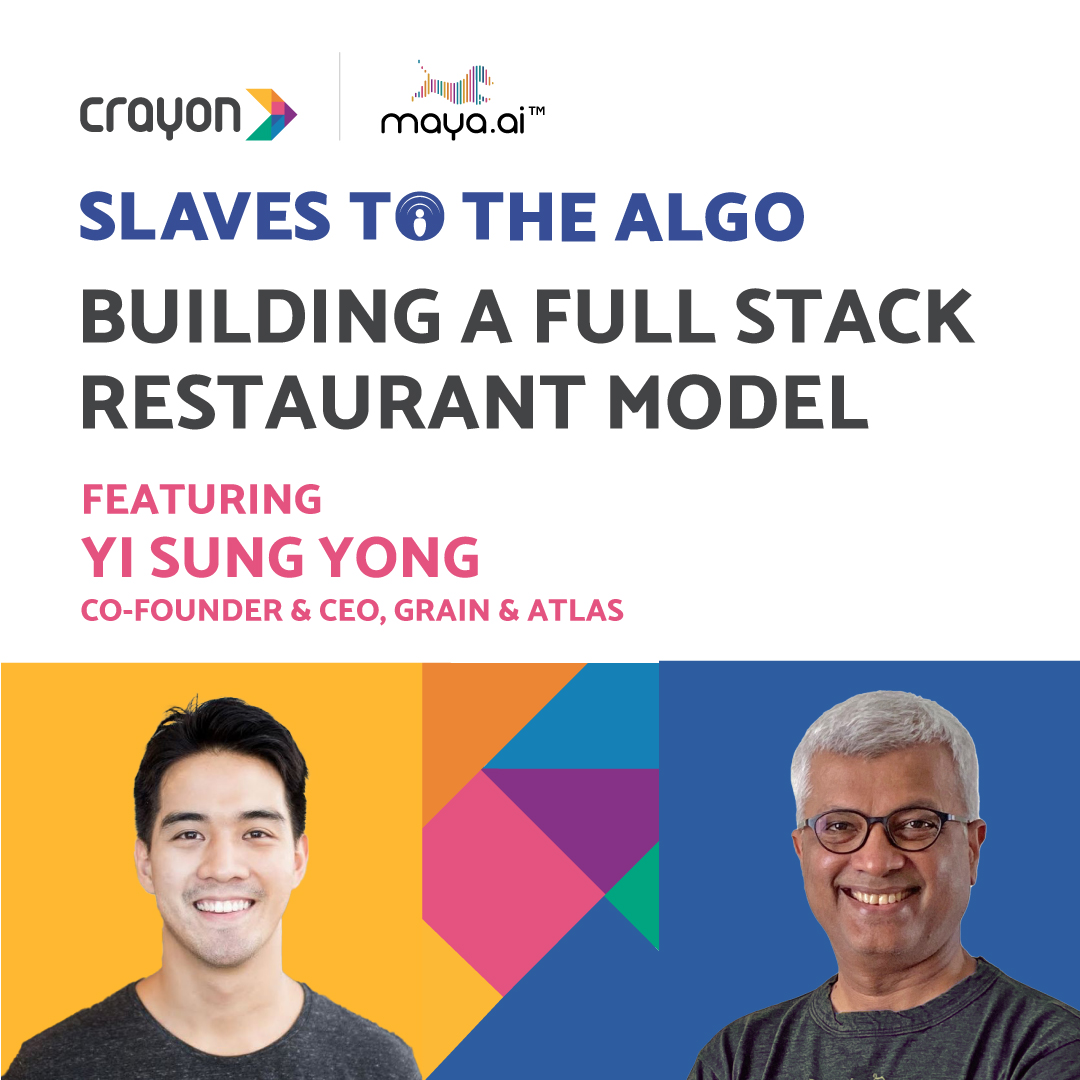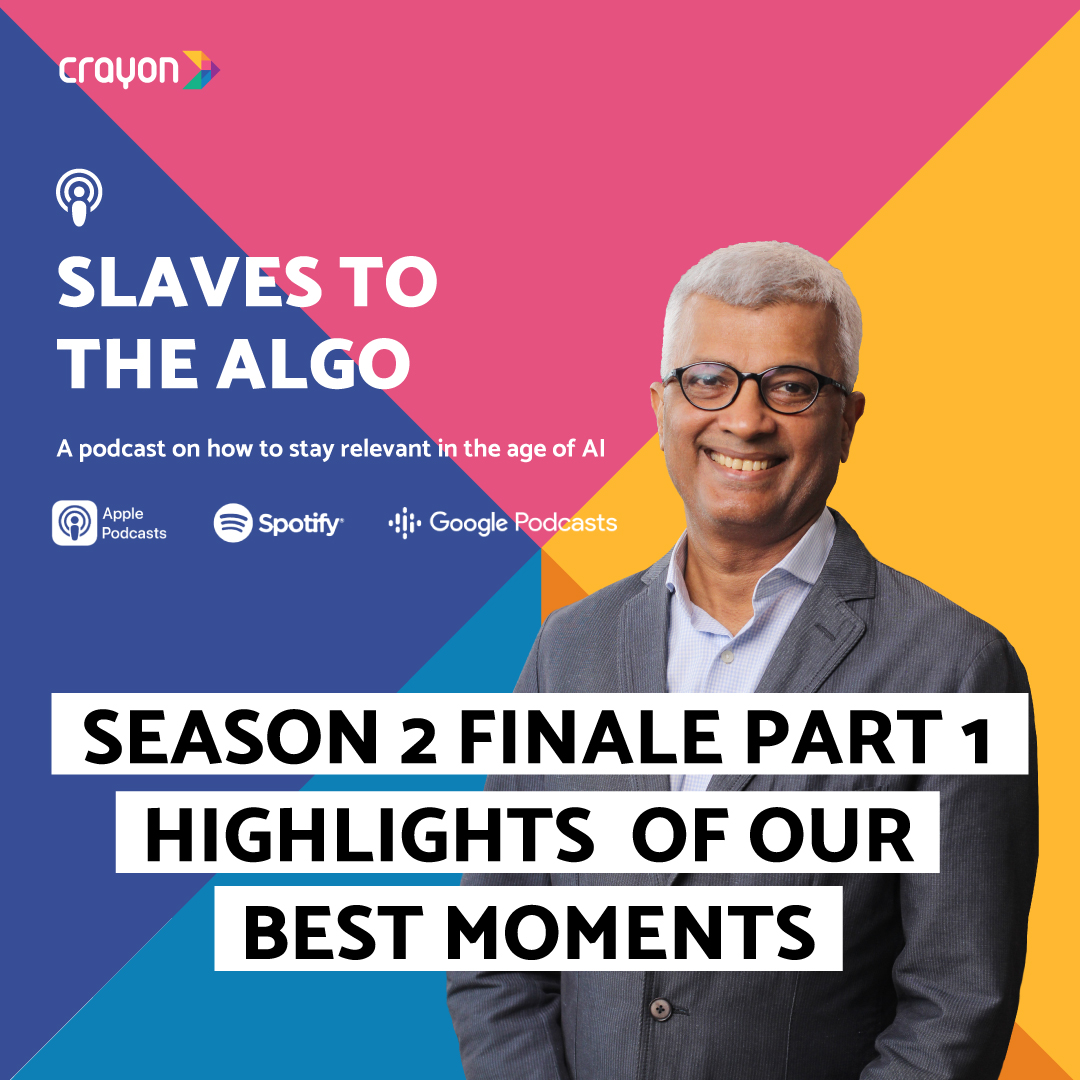In this week’s episode, we caught up with Sandeep Reddy, doctor, medical informatician, AI specialist, and founder of Medi-AI. Sandeep outlined the advances that AI is making in the three critical stages of healthcare: diagnosis, prognosis, and treatment. AI is transforming medical imaging interpretation, improving the accuracy of monitoring a patient’s condition, and formulating the best possible treatment plans by synthesizing a wealth of data. Then, Sandeep highlighted the critical role that AI is playing in early medical interventions and preventative care. Whether it is applications that offer recommendations for healthy diets to coaching and counseling from virtual health assistants, AI can help create what is known as a “continuous care” model. Lastly, Sandeep also talked about how natural language processing (NLP) has enhanced both patient care and medical research ten-fold. Not only has NLP transcribed conversations with their patients so doctors spend less time taking notes, summarized and synthesized tens of thousands of articles and papers to aid researchers. As the American Medical Association puts it, in healthcare, AI should be referred to as “augmented intelligence:” enhancing clinical care through the collaboration between humans and technology.
Full Transcript of S2EP5 below:
Suresh:
Hello viewers and listeners. I’m Suresh Shankar, founder, and CEO of Crayon Data. Welcome back to Slaves to the Algo. Today, I’m delighted to have Sandeep Reddy. Sandeep is an academic, a medical informatician, and founder of Medi-AI. He’s actually quite a rare breed, he studied to be a doctor, a management graduate, and a specialist in AI. And the first time I’ve seen somebody combine these three specialties into one. Sandeep has worked at several educational institutions and medical organizations, before he decided to also become an entrepreneur and founded Medi-AI in 2018, based in Melbourne, Australia. Medi AI draws upon AI technology and combines it with their specialist knowledge in healthcare to devise strategies and applications for hospitals, health care services, and clinicians.
And, Sandeep, in the middle of all of this, somehow manages to find time to be a professor, associate professor at the Deakin University School of Medicine and is a member of the roster of digital health experts at the World Health Organization. One thing I’m certain about is that all doctors tell me to get some sleep and Sandeep is not getting any with so many different hats that he’s wearing. Welcome to the show, Sandeep!
Sandeep:
Thanks, Suresh. Thanks for having me.
Suresh:
Sandeep, before I start, first very curious about the combination. You studied to be a doctor, then you went and started business school which several people do, and then you studied AI. What’s that? What’s the backstory here?
Sandeep:
Yeah, good question. Obviously, as a doctor, you have this interaction with patients one to one, then you start to realize that there are issues that you can’t necessarily deal with or address from that one-to-one interaction. You start to think of the population level. So that led me onto a path to public health, and I undertook studies in public health, but also the training with the World Health Organization. When I was with the World Health Organization, I had this exposure to data analytics and that got me interested in data analysis, and how to present insights from medical data.
So that led me to a Ph.D. in hospital data analytics, and as you very well know from your past interactions with other experts on this podcast but also through your company, machine learning, artificial intelligence is all about data. So, kind of that transition into interest into machine learning and then artificial intelligence and so forth.
Suresh:
Great. And so, it wasn’t exactly a planned journey. So, you went from being a doctor doing public health, then you get exposed to data then you say, I also got to do this. And now you found a way to bring all of that together into a synthesized whole.
Sandeep:
Yes, it was quite serendipitous you may say. But I also see the ongoing medical evolution, the medical training, and the way, clinical practice evolves. It’s really hinging on data and data inside. So, I think at some point in time even if I was practicing as a medical doctor, the parts would have kind of coincided anyway.
Suresh:
That’s absolutely true and we’ll get to that. But I like to literally start the podcast always with a more personal question to my guests right on data and AI. I mean, we all get affected by and one of the reasons why I started a podcast is that we all get affected by data and AI in many ways and sometimes we know about it and sometimes we don’t even know what’s going on in the background. And this is true in our personal and our professional lives.
Could you give me a couple of examples of your, of you know some of the favorite algorithms in your life that have impacted your daily life or your professional life? You know either, people may know about it or not. Any examples at all?
Sandeep:
Yeah, what I’m about to say is probably applying to a large segment of your audience. It’s a very interesting question because it really highlights how much AI has permeated our daily lives. We wake up asking our smart speaker about the weather and schedule for the day, and perhaps even the news, and then later on at work, you use search engines driven by cutting-edge algorithms to find important information.
And during the breaks during your work, you may be browsing social media, and then you get recommendations from the social media about people you need to connect with or channels you may want to subscribe to. It is all driven by recommendation engines. Then after work you want to kick back and relax. You’ve turned on the TV and then you get recommender systems, applying the programs you need to watch, movies you need to watch. And then finally, towards the end of the day, your smart assistant says it’s time to bed. This kind of like full circle, you start off your day with AI and it ends with AI, and many times we don’t even know that this AI is driving all these applications. It’s really become part of our daily lives. That’s very interesting, isn’t it?
Suresh:
That’s, that’s a fascinating way to put it and, you know, I think you’ve frightened half the world and you’ve excited half the world when you say that. But which of these moments do you really find in your life, as something that, wow, you know that’s something that really useful to me? Or something that really, that you know, excites me? And you know which of all these algorithms that you encounter as a specialist.
Sandeep:
So, there are these algorithms that are in clinical practice and in medicine. But I want to talk about the simple algorithms which while they may be very simple, they’re very profound. For example, the search engines we use. We may think it’s part of our daily lives and we use it so routinely it’s not really very impactful but it does make a huge amount of difference. Whether we are trying to search for a restaurant, search for a hospital, or search for a particular answer to a particular question. This really the way the search engines have evolved to become so fine-tuned to our personal profile, being able to narrow down the results of precise kind of answers is really, really impactful. And I found that really fascinating. And obviously, there’s a lot of complexity behind those search engines, which is not obvious to lay users, but it’s that kind of thing that is part of daily life but still makes a huge impact in terms of what we can do.
Suresh:
So, let me ask you something about healthcare and search engines that I think all of us relate to. The first thing that happens nowadays when you all fall sick for anything is you go and google something right? And you say what it is and I met a doctor when I went and told him something about you know this is what I heard. He said you know, where did you read it? And I said on the internet and he says don’t confuse your ability to Google with my years of medical training.
So, what is your take on all the search engines and what they are giving us when we go and search for these symptoms versus obviously a trained doctor like you? And when does this actually, the expertise that you have, actually start making its way to a democratized version if you will, to the public?
Sandeep:
It’s a very good question. So, I definitely agree with your doctor. We can’t rely on Dr. Google. It’s probably better to rely on human clinicians. But what is happening over time is, especially in the US, you have these major clinics actually having their own websites or information, preliminary information that patients want to know. For example, they’ve been diagnosed with a particular condition, and they may not have the means or the time to access the doctor immediately. And in the interim, they want to get some more information so they want to go to a credible and authoritative website, so you have major hospitals in the US actually having their own websites detailing information. Obviously, there is a requirement for you to kind of verify that and have that authenticated by a human clinician. But at least you get that level of information available to you.
But it’s always pertinent and important to derive information from authoritative sources. Nowadays in the context of the pandemic, there’s a lot of misinformation floating around. And a lot of untruths floating around. So, it’s really, really important to ensure that whatever information you receive comes from a very authoritative source.
Suresh:
I think you’re right because there are so many sources on the web and I typically tend to go to the Cleveland Clinic or the Mayo Clinic sites because you know you associate them with slightly more better-quality information. But let me actually come down, down a little bit deeper into some of the problems you’ve been working on Sandeep because, you know, I’ve seen the work that you’ve done. We’ve talked before, and one of the roles of AI is that you know it’s not after I fall sick but in improving early detection in making a more accurate prediction about, let’s say something that affects many people. Blood pressure, right? And you’ve done some work about, you know, predicting what kind of things is this. Could you tell us more about these kinds of predictions in early detection in your work? And how AI is helping solve this problem?
Sandeep:
Let me set the context in terms of how AI is applied in healthcare. So, AI is applied across all medical disciplines, I don’t think there’s any medical discipline that’s untouched by artificial intelligence. But if you want to really categorize the way AI is applied in healthcare there are three main categories: there is the diagnosis, there’s the prognosis and there is the treatment. So, what is the diagnosis? Diagnosis is identifying medical conditions. In this particular area, you start to see a lot of AI applications, especially in the area of medical imaging interpretations, analyzing CD majors, analyzing X-ray images, and trying to identify the areas of concern, the lesions, and so forth. So, there’s a lot of maturity in that area.
Then when we talk about prognosis, which is really determining the outcome of a particular condition. And when you have patients within the ICU or patients within the hospital and the doctors wanting to know how the treatment approaches will work on this particular patient. Then again, AI applications play a role. You have a lot of applications being used in the ICU area and the emergency department area to monitor patients to see if this particular patient requires early intervention because they may go into complications.
Then when you talk about the treatment end of things, you have clinical decision support systems, which not only help with the diagnosis but they also help in formulating personalized treatments. Nowadays you get huge amounts of clinical guidelines. I don’t think there’s any doctor, a human doctor that can say that they know everything about that particular discipline because that’s the amount of information that is coming in too. Then you have genomic data, those kinds of patient data that’s coming in too. So, what AI can do is put all this information together and formulate the best treatment possible. So, in the area of clinical decision support systems, my company Medi-AI has done some work in association with a UK-based university, we developed a clinical decision support system that…
Suresh:
Before we go in there, just want to kind of quickly ask you. So, that’s a lovely thing. So, you’re saying there’s diagnosis, there’s prognosis and there’s treatment. And if I’m right, you’re saying, diagnosis, especially in terms of imaging and interpretation of test results, is the part where, where the AI systems or the machines are doing very well and would it, therefore, be right to say that in prognosis, it’s a little bit less developed and treatment a little bit less developed. Is, is that my takeaway from this?
Sandeep:
Not necessarily. The way I put it is that why I emphasize medical imaging analysis applications is because computer vision, convolutional neural networks have been able to really achieve that kind of level of accuracy comparable to a radiologist, if not exceeding radiologists. For example, identifying cancer lesions and CT scans. I didn’t find cubical assists in X-rays, X-ray images so forth. Not just in those kinds of images but also in histopathological images, and so forth. So, you have that various studies showing the progress and the performance of medical imaging, interpretation, applications, or in other words computer-aided diagnosis.
In fact, World Health Organization has recently said that it actually recommends people to use computer-aided diagnosis in terms of identifying tuberculosis and chest X-rays. So, it’s come to that point where the leading health organization in the world has said, yes, we may want to consider the computer-aided diagnosis. Specifically, AI applications, identifying, and diagnosing tuberculosis. So that’s why I kind of emphasize that. It doesn’t mean that there aren’t any applications in prognosis or in treatment that are not worthy of our consideration. It’s just that there is a lot more happening in the diagnostic space, and there’s going to be more, much more happening in the other spaces in the coming years.
Suresh:
But again, Sandeep just to get in and I think to make it relevant to the lay audience right. In a way, what you’re saying is true of all AI systems and other verticals right? I mean diagnosis is about looking at something that has happened and interpreting it, and their machines tend to avoid human biases because they’re able to look at a lot more information, make comparisons and do that.
A treatment on the other hand involves making a holistic assessment of something and actually interpreting that. And there the human mind has something to add because we’re able to see certain things that machines can’t necessarily join that. So, in a way, it seems to me that what you’re describing is or how AI is evolving in medicine is exactly the way it’s evolved in, let’s say, credit scoring in financial services or anything else that you’re doing. But, you know, I interrupt. You were telling me about, you know the work that you’ve done in Medi-AI about making accurate predictions in areas like blood pressure.
Sandeep:
No, thank you for that analogy. Indeed, AI a journey in medicine that kind of reflects what’s occurring in other areas, but, traditionally, medicine has been a bit slower in adopting AI because we are dealing with human lives, and obviously, human clinicians and other health bodies have to be careful in adopting technology which hasn’t been tested. So, there will be slower adoption of AI in healthcare as opposed to other sectors. But coming to that particular area where Medi-AI has developed a clinical decision support system is we work with a UK-based university and a cardiologist to develop a clinical decision support system to identify those patients who require reference to ambulatory monitoring of blood pressure.
For those of your audience who do not come from a health background, this is the process when you want to validate whether somebody has had true hypertension as opposed to white coat hypertension. Sometimes you get patients coming to the clinic and being in front of the doctor and then you have elevated blood pressure, but they do not have underlying hypertension, in order to roll it out, that one, or masked hypertension, you need to go through this process called ambulatory monitoring of blood pressure where you are attached to a monitor, and you take it home and it goes beep, beep, overnight it’s very inconvenient. But it does give you an accurate picture where you have hypertension or not.
So, as a doctor, you want to make sure that the patients who refer to that particular process, are those ones that really need that particular intervention or procedure. So we developed an ensemble model using various algorithms to identify those patients to a reasonable degree of accuracy whether they require that referral. And that was one of the things that we worked on: clinical decision support systems. There are other things that we have worked on, but I’m sure in the course of our conversation I’m able to bring that up.
Suresh:
Sure, and I think that’s, that’s very interesting because, again, when you go into the deconstruction of an AI in any industry, you’re trying to distinguish cause and effect. And what you’re telling me out here is the actual presence of the doctor itself can sometimes influence how the patient is and you’re trying to separate that out. And I think, what are the areas do you think, as you’re doing this work in Medi-AI right I mean one is obviously predictive in the predictive analytics in the early stages of the disease.
But, what about you know the whole area of preventive care? There’s a whole bunch of healthcare applications that are encouraging people. I don’t know which of these is pseudoscience and which are these backed by data and AI, you know, exercise more, eat healthier, develop better habits. Is AI going to play a big role in preventive health care? As we were talking about you know early detection and preventive health care, is it more likely to kind of come in, you know, after something has been diagnosed? So, let’s start with preventive health care.
Sandeep:
Yes, as a public health medicine specialist I always like to talk about the discussion about preventative health care. So, when you look at the definition of health by the World Health Organization, it’s not only talking about the absence of the, it is talking about complete well-being. Current healthcare models are really geared towards downstream models, reactive models. What it means is that not only do you treat the patient quite late but also it adds to the cost of delivering healthcare services.
What we need is an upstream model, an early intervention model, which is really about that preventative model right? And I think AI has definitely a role. Why so when you’re talking about chronic diseases which is really the one which causes the hugest burden or the highest burden on healthcare services and is the major contributor to healthcare expenditure. Most of these prime diseases can be prevented by early intervention, by the adoption of healthy lifestyles, including diet and exercise. And what happens most of the time is, people do not have this healthy lifestyle, either because they do not have the information or do not have access to the necessary counseling and coaching. I think yeah, it’s come a long way in that sense, that it can offer applications that can enable this virtual coaching, personalized coaching to enable these changes in this lifestyle.
In fact, our company is focusing on this particular area: early Intervention preventative models. We have introduced an app, application called Helia, which is focused on type two diabetic patients. What it does is creates a personalized diet regimen, personalized exercise regimen, through smart technology but also integrates patient data, that data that’s being collected to this process to the caregivers, whether it’s the doctor or allied health providers.
Why is that important? Because what happens is currently the way, clinical care or medical care is delivered is very episodic, you go to a doctor, you spend that 15-20 minutes with the doctor, and then you’re out, and you lose that connection between the doctor or the healthcare provider. What we should be looking at is this continuous care model. And I think that approach of integrating patient data from home, and through other activities that are occurring at home, back to the clinic, or back to the healthcare provider, enables that not only that continuous care but in case there was something that is alarming or that something that was out of, untoward happening, the healthcare provider can intervene. Obviously. this has to happen with the patient’s permission, but it does enable that continuous care model, early intervention, wellness with well-being model.
Suresh:
And then that’s such a fantastic thing because you know, I wear an Apple Watch and I think about when the pandemic hit, I started tracking everything that I’m doing. And you’re absolutely right. Just the availability of the information gives you a good insight as an individual to change your habit. But, you know, again, I have an interesting question which is very relevant for you because I think like I said you combined your doctors’ hat, with the business hat and the AI had.
We’ve heard so much about how technology is going to change medical, healthcare and like you know make it better, right? I’m even saying all the things like gene editing and CRISPR and all of that. We’ve heard about IBM Watson, we’ve heard about the Apple Watch and how it’s going to, there’s so much talk about data and AI and healthcare. How much of this is real, from an individual’s perspective today? I mean what things do you think you will solve? Let’s say in the next year or two, what do you, what w problems do you think you’d solve either day to day lives or big problems because otherwise, it seems like false dawn all the time.
Sandeep:
Sure, you kind of find it’s a multi-layered question so let me kind of unpack it a little bit. First, let’s look at the context of healthcare. What we have current healthcare is not sustainable in terms of being able to continue to deliver this level of healthcare services or do not scale up to scale, or scale up the health services. Why so? Firstly, let’s look at the amount of time it takes to train doctors or nurses, or healthcare professionals, it’s an enormous amount of time. And after even after they’re trained, they require certain years of experience to become competent in that area.
And then you have the demand for healthcare services, which outpaces the supply end of things so that kind of creates a mismatch between the demand and supply, right? And in addition to that, you also have the increasing expenditure of running healthcare services or delivering health care services, and the last part of it is to do with recurrent healthcare expenditure which is really about salaries for healthcare professionals.
Further to that, then you have these different healthcare systems with different healthcare insurance models, different healthcare financing mechanisms, and they do not necessarily are oriented towards the patient, they may be oriented towards either the health services or they may be favoring the government and so forth. And, further to that, you also have people living in regional and rural areas not getting the same level of care as somebody in an urban setting would get. With all these things, people have been trying to work out solutions but then quickly running out of solutions. There isn’t really a kind of comprehensive solution package that can address all these issues.
I think, AI, because of its underlying sort of potential, but also because of its multi-pronged approach, where it can apply, where it can be applied in different situations can be one of the really good solutions to address this. And from that perspective I definitely think AI has substance, it’s much more than hype. But what has happened is because of the initial kind of impressions of what AI can do or because of companies trying to sell AI, the capabilities of AI have been hyped up to an extent that our people are talking about it replacing human places.
What we are currently seeing nowadays is nothing but narrow AI, which means that it can serve one particular area or one particular domain, but not necessarily deal with multi, multi areas. It’s not multi-purpose. In another sense, we cannot see general AI. As a human clinician, whether it’s a general practitioner or whether it’s a specialist, you do not necessarily focus on one particular aspect. You do many things as part of your daily routine. I don’t think there’s any AI in the world that can do that. So, when we are talking about AI replacing human clinicians, we are really talking about science fiction, which is probably many, many years away.
Suresh:
Let’s just drill down on that point. Which areas do you think that AI can most immediately create that, you know that narrow AI? Can you give us a couple of examples of where you think narrow AI is the most likely to affect normal people? I mean, you know, and help them?
Sandeep:
Yeah, in certain areas like as I mentioned earlier, we talked about the potential of convolution neural networks, what they can do in trying to identify anomalies in medical images. We have seen several studies, not just retrospective in-house in silico studies but also prospective randomized control trials. We have also seen in the US, the US administration reimbursing medical imaging analysis applications. So, from that area, I think there is a great deal of maturity that has been achieved with computer-aided diagnosis and in other words: AI-enabled medical imaging interpretation. So, those aspects, definitely. And they’re also we have seen that AI applications being integrated into city machines by certain companies that give me all the AI interpretations. So, I would say that is a really good example to show how AI can make a change and make an impact in healthcare.
Suresh:
Okay.
Sandeep:
But there’s also AI being used in non-clinical areas but in healthcare administration. For example, for reimbursement, for booking of patients, scheduling of patients. These are low-risk areas in the sense that they don’t directly deal with patient lives or patient care but at the same moment, they give you that necessary impact and necessary benefits in healthcare.
Suresh:
Yeah, and I move on to the second part of what you said which is that the ram of like you know machines doing everything is science fiction. And I think it’s also a human thing, right? I mean, I would feel very uncomfortable being taken care of by a robot as opposed to a human doctor. And, but there have been, it seems positive responses to virtual health assistance. Do you think that there are advantages to these? Do you think they’ll grow in popularity? What’s your take on this whole idea of actually having something like that in people’s lives?
Sandeep:
Again, it goes back to that point I made earlier; current healthcare models are really episodic in nature. They are not necessarily affordable, and sometimes you can’t access that health care immediately. You actually have to make a physical visit to a health care, health care clinic. So what if we are able to bring that health care to you, your home, where you are in a much more effective and efficient manner. And that’s where virtual health assistants play a role. And in fact, in the UK. The UK government has already engaged virtual health assistance to do triaging of patients. What this means is that at home you can enter your symptoms and as a symptom checker or virtual health assistant, it gives you a differential diagnosis if there was something serious then it would be able to actually make a referral to the nearest healthcare practice.
So, this works very well in terms of avoiding, making sure that patients who do not require to travel to the hospital, do not necessarily have to do that. They can be treated at home, or receive nursery intervention, early intervention if necessary. So, the other thing is that virtual health assistance is that you can also customize it and personalize it, according to the particular context so you don’t have one kind of approach for all different situations.
But the drawback is that still because there is a lot of work to be done in that area from a technological perspective sometimes you may have a misleading diagnosis, misleading conditions being identified and that can create alarm among patients. The other issue that may emerge is those older people, older segments of the population, who are not necessarily digitally savvy, may not want to use this, and if you want to use an introduction and virtual health assistance and replacing some aspects of your health services, then you’re ignoring a large segment of the population.
Suresh:
You know Sandeep it’s fascinating because you know you’ve talked about at the beginning about how from the time you wake up to the time and go to sleep AI is solving a whole lot of problems for people. And now what you’re telling me with this whole virtual assistant and the whole idea that it’s all episodic today is that eventually but not just yet. You’re going to have literally a system like that which can actually track a lot of things that you’re doing, and by so doing, it can actually create probably a causal chain between all your daily actions and then what’s happening to your disease and that then helps you still need the human-first doctor. But then the human doctor is unable to actually look at a fuller chain of data to be able to make it rather than just examining only, what, what he’s seeing in front of what he or she is seeing in front of them, at that point of time. Would that be, would that be the future of our medicine is going to go?
Sandeep:
Yeah. It’s a very good point that you raised there. The American Medical Association uses a term called augmented intelligence. I think that artificial intelligence kind of creates a bit of consternation anxiety amongst people. I like the term augmented intelligence, it’s non-scary non-threatening it what it means is that it is enhancing patient care, enhancing clinical care. And it also means that there is that level of collaboration between human clinicians and the AI aspects, and I think that’s really the attitude and the kind of approach we should adopt and also portray in terms of how AI can be integrated into clinical care.
I always believe there has to be a human oversight, no matter how powerful the AI is. Even if we move from narrow AI to general-purpose AI or strong AI, we still need that human oversight. One is not just because we need that assurance from assurance for patients that there is a human oversight, but it also important that human clinicians that in terms of empathy, in terms of the care that are involved and they are consulted in that whole package. They don’t want to kind of ring-fence the AI care from the human care. So, it’s really important to integrate that, I think that’s the way to approach things going forward.
Suresh:
And it’s interesting because you know as an industry and as you’re trained to do empathy for the human being is literally the start of healthcare. Well, your Hippocratic Oath says as much right. But I’ve also seen what happens in other industries when over a period of time, more and more data and more is fed into systems, and the systems start to take over the decision, and eventually, you’ll end up with something that’s inexplicable. And even the person who’s making the decision, for example, a decision to give a credit card.
In the US the FICO score pretty, pretty, pretty much runs your life, right? If you have a poor FICO score you can’t get credit to do anything. And there is no one who can tell you how the FICO score works and what it does to your life. So, it’s a little bit scary as well, don’t you think? That when it comes to our own lives and bodies that maybe not now but in 10 years’ time, you know, something may be denied to you or told you to do something, do you think that we’ll reach that dystopian future? Should people trust it or should we just say no, no, I’d rather a doctor go through 10 years and listen to the human being?
Sandeep:
Yeah, it’s a good point. We, if you look at medicine, some of the way, some of the drugs, how they work, it’s not really known. We kind of, you know, take it for granted and we use those medications, and sometimes some of the procedures or some of the diagnosis we make we can’t really explain that very well. I’m not talking about the involvement of technology just the human processes. But in terms of AI, because it’s an altogether different technology it’s got its own special abilities, and you want to kind of bring it into clinical care, there’s always going to be some mistrust happening. In order to engender trust, we have to make sure that whatever decision-making is done by AI is very transparent.
And we know that in specific AI models like deep learning models because of the architecture of those deep learning models with those hidden layers, the decision making is very opaque and then you have this ability of these deep learning models to exceed that of explainable machine learning models. So, some of the machine learning models are explainable for example we are talking about logistic regression, decision trees, you can kind of chart the steps in the decision-making process but then you talk about support vector machines and deep learning models. It’s really, really hard to identify how the decision arrived.
And if you think of a scenario where you have an AI application making a decision or a treatment, providing a recommendation about a treatment that is very different from what a normal clinician would provide. It may be still right but still, then you have that resistance among the human clinicians or among the patients to accept that. So how do we overcome that? So, there is a field of science within the field within AI called Explainable AI, and there’s a lot of research happening and study happening in this area. And let me kind of talk through what Explainable AI is. Explainable AI is not so much applying the architecture of that particular model but talking about the functional process of that particular model or interpreting how the decision arrived. In other words, explaining the causal sequence, how the results arrived. So that’s really important in medicine because transparency is key in clinical care, and without that transparency, I don’t think you’ll be able to adopt AI, especially complex AI models in clinical care. But also, to create that process, not just for doctors, but also for patients to rely on that AI advice.
Suresh:
I think it’s fascinating Sandeep because you say that and I’m sorry to cut there, but I think there’s a fantastic study done in human psychology by a guy called Robert Cialdini, and he talks about that the moment you add the word because and explain why something is being told to somebody, the adoption of that whole recommendation, the adoption of whatever you’re telling them, the advice, actually goes up.
And in some ways what you’re saying is like if the AI can come in and tell me: okay, you’re being told to do, ABC, because of something that it makes it easier for a patient to do that. And again, I’m linking it back to something you said about augmented intelligence. That makes so much sense, right? If the doctor is able to tell you as I’m telling you to do this part because ABCDE and the machines providing that. That would be a fantastic outcome, I believe, if every patient-doctor interaction went like that.
Sandeep:
Yeah, I mean, if we talk about natural language processing, nowadays we use natural language processing in various areas. But in terms of the context of medicine, there is that ability for natural language processing to do a real-time transcription of the conversations between patients and doctors, but not only that but also be able to record that in documents. What it means is it gives more time for the doctor to spend with the patient. Then there’s still that ability for human oversight once the document is chartered, we have the doctor being able to overview that and or use that and kind of sign off on that.
In fact, Medi-AI has created a prototype that does that because, unlike your regular transcription software, natural language processing has the ability to comprehend medical terms. There are a lot of medical terminologies now. You not only have the general medical terms but then you have sub-specialist medical terms. So natural language processing is very well equipped to kind of capture those kinds of terms, but also be able to distinguish between patient conversation and the doctor conversation and do it all in real-time so we created a prototype around that area. But the other thing that natural language processing can do is biomedical data mining because there’s a huge amount of research literature coming in too. No human being can actually go through all of it and be able to digest it. So natural language processing can actually summarize the information and give you the relevant information straight away. I’m not talking about hundreds of articles I’m talking about 10, 20,000 30,000 articles. In fact, a company has been involved in developing such applications. So, there are various ways of natural language processing…
Suresh:
Is there any particular area that you’ve looked at in research and you know how, what, what, what kind of insights did you get from that?
Sandeep:
Yeah, we were involved in biomedical natural language processing which was able to crawl through 60,000 COVID-related articles to be able to identify key insights. For example, we know that with COVID, patients or with the in the clinical context or even at home, a lot of patients lose the ability to smell lose the ability to taste. But we also want to know what is leading to that, and there’s a lot of research going on in that area. So, somebody wants to do just a general search, it will take, you know, weeks and even months even to get the relevant literature. But we created a search engine that is able to go through all this database, all this literature, and be able to pull out the relevant articles but also summarize that information form of abstracts.
Suresh:
Is this for the doctor or for the patient?
Sandeep:
Yeah, it’s geared towards clinical researchers because it’s looking through peer-reviewed publications. But potentially, if there were people in the general public or interested in, identifying key insights from this literature that could be done, that could be accessible too. And we made it publicly accessible, it’s not hidden by paywalls or anything. So, it was done in the service of humanity.
Suresh:
So, it seems Sandeep, as I’m talking to you and again, I’m, uh, I know a bit about data and analytics and AI but not about healthcare. But it seems that as I’m listening to you that the healthcare system is not suffering from a lack of data. In fact, especially in things like research and the training and all of the revenue, this is, you know, people have been studying this for a long time. What really the biggest power where it seems to be almost is that can I take all the data put it into a system and actually start to distill that intelligence and make it available? Either to the, you know, the radiologist or the clinical researcher or the doctor, it seems that that’s where the biggest bang for the buck is going to be. Would I be right in that?
Sandeep:
You’re right on the mark because one of the things that AI in terms of its software, and in terms of its architecture it separates itself from traditional software is that it’s really got that ability to recognize patterns, correlations between terms, the correlation between data points and so forth. In the past, traditional software because of the huge amount of data and the huge complexity of data they were not equipped to kind of pull out those insights, and it would take a huge amount of time to even develop this kind of software because you had to envisage every scenario. But with machine learning because of its ability and its powers it can kind of predict, look through between different terms, try to find the relationship between those two things, entities, and then be able to recognize those patterns and predict what is going to happen.
So, this is the potential of machine learning, and if you kind of extrapolate it and apply it to the medical data, patient data, genomic data, radio make data, you can start to see the potential of AI being able to get, get those data insights but also guide clinicians, guide healthcare services, in making the appropriate decisions. But where the issue is that a large amount of data that is gets accumulated in health services, unstructured data. We know that the largest amount of time that is taken to create AI models is not so much in creating the architecture of the model but it’s cleaning up the data, structuring the data so that the AI model can be trained with the data.
We also know that if we feed in incorrect data, we get incorrect results. Garbage in garbage out. So, I think we have to be mindful that while there’s a huge amount of data, not all of that data is readily accessible, and when it’s accessible, it may not be structured enough for us to train AI models. But if we keep assigning that, yes, definitely machine learning because of the way it is, and the way the architecture and the way the mathematical function underpinning mathematical function is much more capable than your traditional software to be able to garner the insights from that.
Suresh:
Sandeep, it’s been fascinating. I’m sure we can talk it’s such a big area I mean I’ve wanted to talk to you about how genes are evolving and all that stuff but I think that’s probably the subject of another podcast. I do have a couple of final questions here. You’re a public health care professional as well. And one of the things that we’ve seen about AI in general and other industries as well. I’ll say two big things.
One is the area of bias that because data tends to be very much about like you know certain kinds of people certain kinds of diseases; you tend to have systems that kind of have bias. The second one, which you pointed out earlier, is that AI tends to be or data tend to be available more for people who are, you know, higher up the socio-economic strata, who are living in urban areas. And like you know people who are outside, you know, are not able to access these. Do you have any thoughts on how AI is going to kind of democratize, you know, one remove bias, two democratize, to make it available to everybody?
Sandeep:
Yeah, there’s been a lot of coverage about how AI can create biases. To be fair to AI, there are already biases in healthcare service delivery. So, it’s unreasonable to expect AI to kind of eliminate those biases. But on the other hand, we do have a reasonable expectation, if we integrate AI into our healthcare service or CAE models that it doesn’t introduce biases. So, we need to understand how these biases are created with AI. So, this can happen largely because of the data itself, not because of the algorithms. And what we’re talking about here is data that is not representative of the target population, or it’s incorrect data. What do I mean by non-representative data, say for example we are targeting a particularly diverse population, which has a high incidence of hypertension, and we know that within that target population, a particular segment of or particular ethnic population has a higher degree of hypertension? But then you train the data, on ignoring that particular segment of the population, on the rest of the population, obviously it’s not going to be able to recognize that particular segment of the population will have hypertension. So that’s the kind of example for non-representative data.
Then you have the incorrect data which is self-explainable. If you feed in the garbage, you get garbage out. So because of these reasons, you may get biases. So, in order to avoid those biases, we need a governance framework. Myself and my co-authors published a lengthy article in the Journal of American Medical Informatics one year ago. In that governance framework, we talk about strategies to avoid this kind of biases. One is we recommend data governance panels, not just in health institutions but even within software vendors, they ensure that the data that is utilized is representative of the population, it’s correct. So that’s one approach. The governance framework is not just about mitigating biases, we also talk about how to avoid any mishaps in healthcare and because of the introduction of AI and if mishaps occur, adverse events occur, how do we mitigate that and prevent that? So, it’s a broader one, but the important factor here is data governance which is something we need to take into consideration.
Suresh:
That is fantastic to hear and like I said Sandeep, we are near the top of the hour really and I think we could go on forever and I probably will kind of follow up with a little bit of a more detailed chat on some of these models and so on. And I guess the one thing I’m going to ask you, on a more personal note, you’ve studied medicine, business management, and AI. Do you think that teaching people about data, teaching doctors about AI data, how to handle this go to become part of the medical curriculum, anytime soon?
Sandeep:
I’m already working in a medical school and I worked in medical schools, we are already talking about how care models are changing, and the impact of technology, not just AI, there’s other technologies, Internet of Things, virtual reality, quantum computing, that’s all emerging. I think definitely it’ll have an impact on medical care. So, there’s no doubt about it, but how do we actually incorporate that into the regenerative medical curriculum that we have that has been around for a long time, is the question.
So, myself and my co-author have recently finished drafting a book chapter that actually talks about how to integrate AI education within the medical curriculum. But some universities have gone ahead and already started to introduce AI into the medical curriculum. In fact, I learned that there is a university in the US that actually requires medical students to have a mathematics background or engineering background to be enrolled in the medical school because they teach data science and AI within the medical school curriculum. So, there are universities and medical schools already starting to incorporate data science, health informatics, and AI into their curriculum. So, we’ll be starting to see more and more medical schools are adopting that.
Suresh:
That is, that is such fantastic to hear, the coming together of various disciplines. Sandeep, I think, thank you so much for being on the show. To my viewers and listeners, Sandeep Reddy, academic, medical informatician, founder, and entrepreneur at Medi-AI. A doctor who has studied business, and AI, a rare breed who is trying to change the face of health care, through the use of data, and AI. Thank you, Sandeep, for being on the show, and really look forward to seeing Medi-AI actually transform healthcare through the use of data over the years.
Sandeep:
Thanks, Suresh, for having me.
Suresh:
To my viewers and listeners, Slaves to the Algo is available on YouTube, Spotify, Apple Podcasts, and Google Podcasts. We release a new episode every Tuesday. If you enjoyed this week’s episode, don’t forget to rate, share and subscribe. You can follow Sandeep Reddy at Medi-AI. He is based in Melbourne. And to sign off, stay safe in the age of COVID, stay relevant in the age of AI. See you all next week, thank you.
